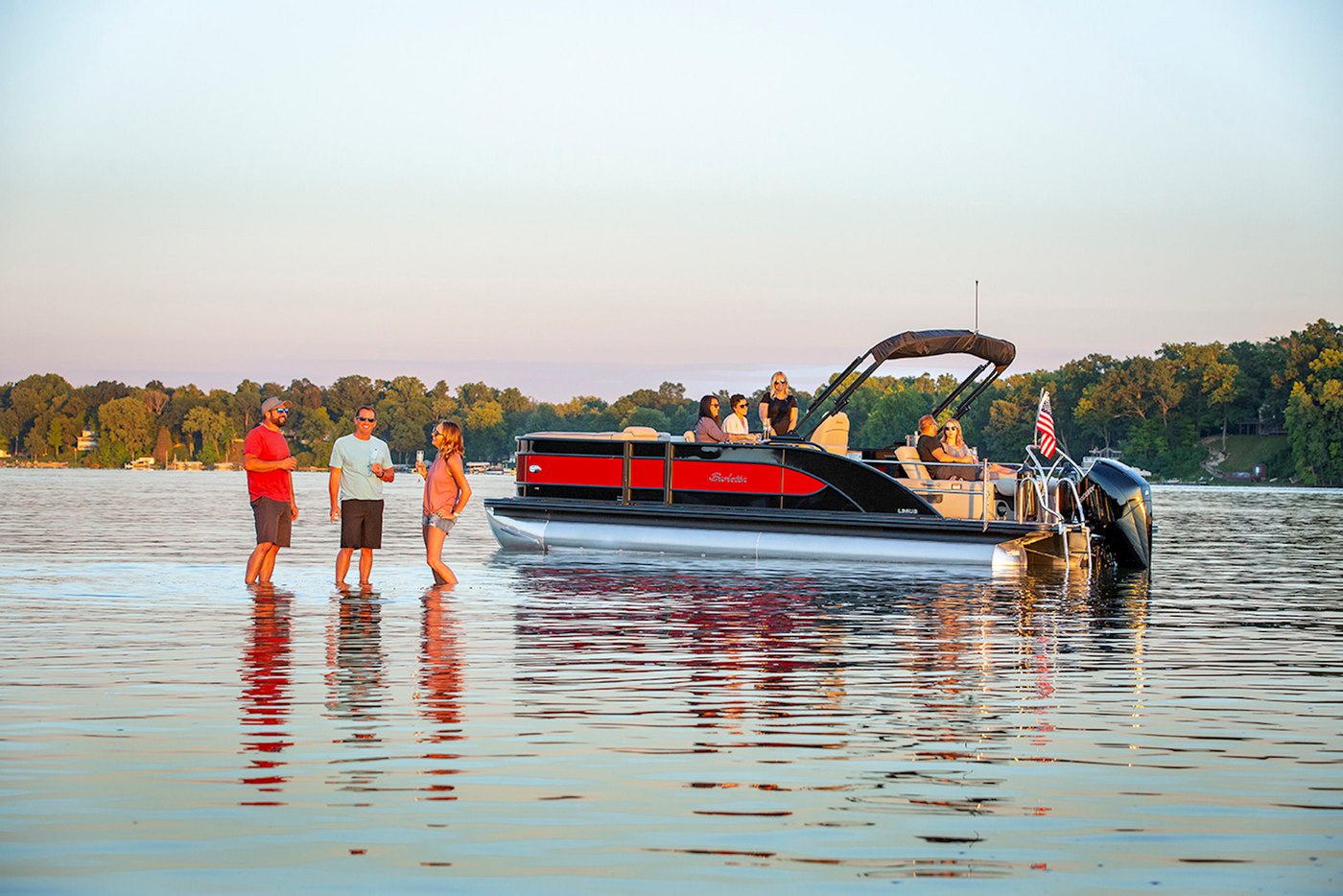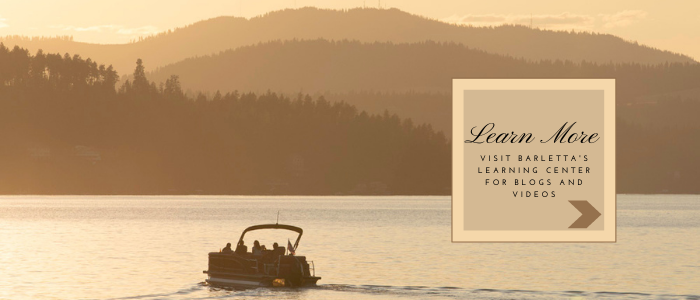Boating Safety Tips for New Water
What I waited all year for was finally here. It was Summer which meant getting the boat on the water for the first time since it was winterized and put away. Going into the new year, my family and I had moved to a new lake which meant it was unfamiliar territory but as a life-long boater, that didn’t scare me.
We dropped the boat in the lake, I jumped behind the wheel and hit the throttle. Everything was going swimmingly until suddenly I heard the unflattering noise of metal scraping against rock. Yep, I had gone too shallow and hit the bottom.
Not a noise you ever want to hear let alone on your first boat ride of the year. It immediately put a damper on the excitement I felt for my first day back on the water. But it was my mistake, I had not paid any attention to the potential hazards that come from not knowing my surroundings.
Due to this incident, I have since learned my lesson. I now craft a strategic plan in an effort to avoid ending up in situations like this. Through many years of perfecting my route, I’d like to share how I plan ahead so that each boat ride is smooth sailing.
By the end of this article, you will have the tools you need to successfully boat on an unknown body of water. I hope to help you avoid most of those messy situations and stay safe while boating in a new place.
Keep in mind, there can always be an unknown hindrance in the water that can’t be avoided. But, by crafting a plan you are in much better shape to avoid most obstacles.
Water isn’t Always What it Seems
First of all, check your boat over and make sure that everything is working properly. It’s important to have a full charge on the battery, no check engine lights on, and your gas tank is full. If your boat is in good shape, you’re ready to choose your course for the outing.
I’ll start by saying that water is immensely deceiving. It can hide a lot – such as shallow spots, downed trees, and other obstructions that are capable of damaging your boat if you hit them.
Here in Michigan, we play a fun game of finding the hidden sandbars. Sometimes they’re in the middle of the lake, sometimes they’re at the shallow end of a lake. It’s one of those things you wouldn’t know without doing your research first. Sandbars are just one of the many obstacles lying below the surface, so keeping a vigilant eye is also key.
Just a quick glance at the water beside you as you drive could reveal plant growth, rocky bottoms, or anything else that could get in your way. Watch for posts, trees, sunken vessels, and anything else you wouldn’t expect but should be prepared to maneuver around. Doing your research could help ensure a happy and relaxing day on the water.
The Importance of Depth Maps
One of the resources I have found to be extremely helpful when it comes to navigating unknown water is a depth map also referred to as a marine chart. Knowing where to find a depth map is a great place to start.
There are many ways you can go about this. The easiest way is to look it up on the internet. A quick Google search of the terms “depth map” followed by the name of the body of water will give you plenty of credible results. Now, before putting all your faith into the first image that pops up, make sure it’s coming from a reliable website.
You want to be sure that you’re looking at a map of the correct body of water. There are plenty of lakes and reservoirs that share the same name in two different states. Double-check your research and vet out the website you land on to ensure that the information on the depth chart is correct before you hit the water.
Finding a depth chart map via a Google search may be the quickest way, but you can also find these maps on DNR, coast guard websites, or websites dedicated to all things fishing.
Google Earth is another option but I must warn you it works about 50% of the time. Sometimes clouds cover the body of water and you can’t get a good view of the shallow versus deep areas. Sometimes the water is murky and it is hard to tell the difference in depths from an overhead view.
If you get lucky and can get a clear view of the body of water on Google Earth, you can look for shallow areas. Shallow areas will be lighter in color. Darker areas typically represent deeper areas in the water.
Now, for those of you that boat on a river or on the ocean, a depth map might be harder to come by. That’s when it’s critical to know how to read nautical signs and markers. It’s also key to understand how to use your boat’s built-in chart plotter and GPS system.
Talk to a Real Person
I recommend boaters to talk with their dealer or any local marina. Marine professionals who work near the body of water you plan to boat on will be able to speak to the nuances like underwater obstacles, speed limits, and other factors you should be aware of before taking off from the dock for the first time.
It's good to hear from people who know the body of water inside and out to help you construct a safe course for boating. Talking to the locals first could save you from having to replace a propeller or repairing damage done by underwater obstructions.
For example, the river that I do some boating on has an entire orchard under the surface. I have no interest in catching one of those trees with my prop. Luckily, I had spoken with a local marina about any hazards I should be aware of and they were able to inform me of the orchard and its location.
I highly recommend speaking with a professional in the area. It helps to know what is in the water and how to avoid it.
Utilize Gadgets on Your Boat
A luxury that Barletta owners have is the depth gauge that’s built into the helm. All Barlettas also include a chart plotter whether it’s a Simrad or a Lowrance system, these make it even easier to navigate the water.
Chartplotters will display the depth as well as the depth map of most bodies of water on the screen. For example, it can show the whole lake or it can show the depth in the exact location you’re in as you move about the lake. Both the depth gauge and the chartplotter are helpful tools when it comes to safe boating.
These tools will make you aware of any shallow water you might come in contact with which could become a hazard. They can also help you follow a course which you would set at the beginning of your trip.
If you’ve talked to the locals, checked out the depth map, and are up to speed on how your gauges work, you’re a step ahead of the rest. I recommend doing your research before you even turn the boat on, it will save you the headache of a damaged boat.
Follow the Rules
Even with all of these tools, you’re not fully prepared if you don’t know the laws that pertain to being on the water in your area. I highly recommend doing your research before setting sail. Every state has a different set of laws and regulations so make sure you’re up to speed.
Boating laws exist to keep everyone on the water safe, so please do your due diligence and look into what it takes to obtain a boater’s license in your state. I don’t care if you’ve been driving a vehicle for 30 years, boating is different and requires a different set of skills.
Not only will doing so keep you safe, but it can also help you avoid getting a ticket for a plethora of things you probably didn’t know were against the law on the water. Most bodies of water are regulated by local and state law enforcement so if you want to avoid a ticket, it won’t hurt to know what rules are in place.
Almost Time to Go Boating
You may be thinking you don’t need to utilize all these resources. Or, maybe you believe you’re a strong enough boater without them.
Let me tell you as someone with years of experience, by ignoring these resources and laws, you will likely end up with some costly damages to your boat. You may damage your prop and need to replace it. Your lower unit may get dinged up and you have to repair the entire thing, which is costly. You may suck up a bunch of sand and burn your impeller.
I don’t think you want to have to go through the trouble of getting repairs done on your boat. It could ruin your day on the water or worse, you could have to sit out the entire rest of the boating season depending on the extent of the repairs needed.
Why take the risk when most of the time these issues can be avoided? Taking the time to do your research will likely save you time and money in the end. You can never be too prepared for hidden obstacles in the water and even utilizing all the resources you can, you may still run into undesirable situations. That's part of boating.
Do your best to avoid these situations and you’ll greatly reduce the risk of damage to your boat. Ultimately making your cruise much more relaxing and fun. You have everything you need to set sail now. Have fun on the water and always remember to be safe and plan ahead, you’ll be glad you did.



